A guide to the Internet of Things
How technology is making our devices increasingly connected to the online world
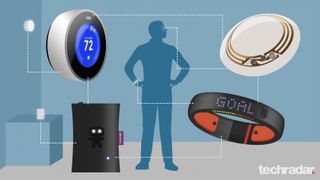
A guide to the Internet of Things
You wake up in the morning and the fitness tracker on your wrist has recorded how well you slept, uploading the results to your Twitter account. Your coffee machine reads your Twitter feed and knowing you're awake, begins brewing your first coffee of the day.
Your bedroom lights, following your fitness tracker, turn on low and begin their slow brightening over the next few minutes as the bathroom starts warming your towel. Lights automatically turn on and off as you walk down the hall to the kitchen where your coffee is now waiting. As you leave for work, the robotic vacuum cleaner begins and updates its cleaning progress map to your phone.
Welcome to the world increasingly being envisioned by tech giants that's powered by the 'Internet of Things' (IoT) and promising to change the way we live.

What is IoT?
But what actually is this 'Internet of Things'? Basically, it's the combination of low-cost, low-power processors with 'real-world' electronic sensors and wireless network connectivity increasingly being added to a wide range of electrical devices.
These sensors can measure everything from temperature and humidity to pressure, proximity, sound, light, gravity, movement, feedback and through on-board software, devices can record and action those measurements over the internet.
IoT was front-and-centre at the Consumer Electronics Show in Las Vegas this year, starting what will inevitably be a year we see tech ventures, large and small, announce a vast array of gadgets that connect to the internet. Vacuum cleaner king Dyson will launch its 360 Eye robotic vacuum cleaner this year. With built-in Wi-Fi and Dyson's patented Cyclone cleaning tech, it'll update your phone showing you its cleaning map and progress.
Like the idea of a coffee machine you control from an app? Denmark's Scanomat has developed the stylish TopBrewer that lets you choose your coffee type from your Android or iOS phone or tablet. And if you're ever in Copenhagen, head to the TopBrewer Café, where there are no queues, just your coffee ordered, brewed and paid for by your phone.
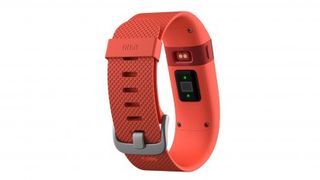
Making it possible
Key to this IoT boom has been the continuing fall in the cost of the technology involved. We've seen this over the last couple of years with everything from 3D printing to smartwatches. The cost of adding Bluetooth wireless connectivity to a device has also crashed through the floor – you've no doubt seen Bluetooth dongles sell for less than AU$1 (approx £0.50, US$0.70) retail on eBay.
Photodetector sensors in new heart-rate fitness trackers sell for as little as 50 cents each in commercial quantities; their green LEDs for as little as one cent. But it's the ever-falling cost of processing power that's putting computer chips into almost any gadget.
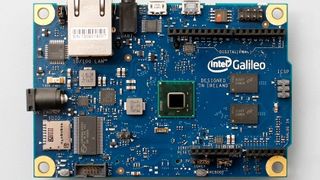
Making your own IoT gear
Unlike previous technology revolutions, the low cost of components has torn down the traditional 'barrier to entry' this time. Today, you just need an understanding of how IoT tech works – the sensors, the wireless technology, the processors, the cloud computing that increasingly forms the backbone – and a great idea.
An idea alone won't make you millions, but thanks to crowdfunding sites like Kickstarter and indiegogo, IoT innovation can be driven as much by the tech community as it can by the big end of town (think LIFX). And those big corporates know it.
In late 2013, chip giant Intel joined the burgeoning DIY 'maker' market by releasing its first small computer development board called Galileo. Part of the 'Intel Maker' campaign, Galileo is powered by a 32-bit 400MHz single-core Pentium-class processor called the Quark X1000 and designed specifically to promote development of IoT projects.
To push it along, Intel planned on donating 50,000 boards to 1,000 selected universities worldwide, such as the University of Melbourne, during 2014. Since then, the Galileo 2 and super-tiny Edison boards have also been released.
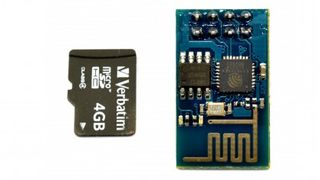
The $3 Wi-Fi solution
One of the most significant advances in Wi-Fi technology in the last year has been the arrival of a tiny little chip called the ESP8266 from Chinese company Espressif Systems. What makes it so significant is that it builds a complete Wi-Fi network component set or 'stack' inside a single chip selling for under AU$3 (approx £1, US$2).
That's just a fraction of the cost of previous Wi-Fi solutions, yet it still supports 802.11b/g/n-standards running at 2.4GHz – the same Wi-Fi specs in your smartphone or tablet. In fact, when you read what this tiny little chip can do, it has the potential to revolutionise how and where Wi-Fi is implemented. Features like built-in AES (advanced encryption standard) security, no need for external components or factory tuning make it a no-brainer and already, the maker community is jumping all over it.
The chip recently made it through the US' Federal Communications Commission (FCC) certification, the last major barrier before finding its way into new commercial-quantity, production-scale devices. Already, you can buy ESP8266 Wi-Fi modules on eBay for AU$4 (approx £2, US$3) that can be added to low-cost microchip-boards such as the popular Arduino series.
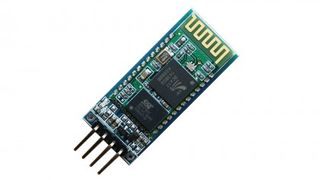
HC-06 Bluetooth module
While the ESP8266 will no doubt spawn a whole new wave of low-cost direct-internet-connected devices, Bluetooth remains the most common wireless connection used in wearable technology such as the raft of fitness trackers flooding the market.
But modules like the HC-06 are available on eBay for under AU$5 (approx £2, US$4) and work like a wireless serial port you can add to home-designed gadgets and technology. Like standard Bluetooth devices, this module can be paired with any Bluetooth-ready Android or iOS phone or tablet and handle data transfer.
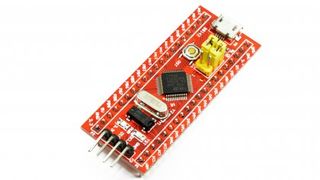
32-bit CPU for $5
One of the other new arrivals we've seen recently is a tiny development board to compete with Intel, sporting a 72MHz low-power 32-bit STM32F103 ARM Cortex M3 microcontroller chip. ARM is the name behind the processor in every Apple iPhone and iPad, plus 98% of Android devices, thanks to its hugely-popular Cortex A-series processor designs.
The Cortex M3 is often used in smartphones to handle secondary roles such as connecting phone calls and data to your mobile network provider, but can be used in many varied applications. While the Intel Galileo sells for typically around AU$100 (approx £48, US$74), these small STM32F103 boards sell from just AU$5 (approx £2, US$4) from overseas online retailers.
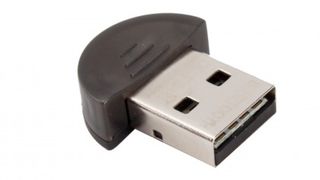
Open standards?
However, the IoT boom is beginning to suffer from some of the same problems that plagued the early PC revolution in the early 1980s. Right now, the pace of IoT development is such that there's as much pressure to get product to market as there is to develop consistent standards to ensure we don't just see a bunch of devices that can't talk to each other.
Everything from hardware interoperability to how recorded data is stored in the cloud is coming under scrutiny, with growing calls for standards to be set before the market progresses too far.

Too many standards?
Qualcomm is one of the major players in the phone/tablet CPU market, producing the ARM-based Snapdragon chips powering devices such as the Samsung Galaxy S5. It's also a major mover-and-shaker in the IoT world, with its AllJoyn open-source software platform forming the framework of the AllSeen Alliance.
Since its launch in December 2013, the Alliance has received big-brand support with names like whitegoods maker Electrolux joining household tech brands Microsoft, LG, Panasonic and Sony, along with industrial giant Bosch to promote the platform. But as always seems the case when a technology revolution begins, competing alliances have formed between companies pushing their preferred solutions.
In the other corner is the Open Interconnect Consortium (OIC), which seems to have the same aims as the AllSeen Alliance for developing interconnection standards for IoT devices – all except for using Qualcomm's AllJoyn software.
OIC launched in July 2014 with heavy-hitters Intel, Samsung and Qualcomm chip-rival Broadcom. However, cracks appeared soon after when Broadcom left the OIC in October 2014 due to what's reported as a disagreement over intellectual property protection.
Chip giant Intel also has its own 'Intel Internet of Things Solutions Alliance', which appears to be more a one-stop shop promoting the products of member brands, including household tech names Dell and Hewlett-Packard, Fujitsu and software giants Microsoft and Oracle.
At this stage, however, neither AllSeen nor OIC is giving ground and both appear set to let the market decide which one wins – in other words, expect a repeat of the 'VHS vs Betamax' wars of the mid-80s. The more things change…

The IoT economy
If it all seems a bit of a storm in a teacup, there's plenty of incentive to get standards sorted out – and fast. According to research analysts Gartner, we'll be surrounded by 4.9 billion connected 'things' this year, rising to 25 billion by 2020.
At that point, the IoT market in related products and services is forecast to hit a cool US$263 billion. In fact, Gartner vice president Jim Tully believes the perfect storm of cloud, mobile, social and information – what he calls the 'Nexus of Forces' – has left many businesses with no choice but to dive into IoT or fear being left behind.
In December 2013, Gartner outlined manufacturing, healthcare and insurance as pioneers of IoT technology. Manufacturing would combine IoT with existing tech such as LED lighting and heating-venting-air-conditioning (HVAC) systems in new smart building designs. Healthcare has seen low-cost sensors help drive the current boom in fitness trackers.
But it's the use of IoT in insurance that may raise eyebrows. Gartner forecasts insurance agencies could begin offering usage-based policies using real-time driving data coming from your connected car.
Of course, you might question whether that same data may result in you paying a higher premium than other drivers if analysis of that data classifies you as a 'bad risk'. Whatever the case, the connected car is already here - Gartner predicts automotive IoT devices will number 372 million by the end of this year.
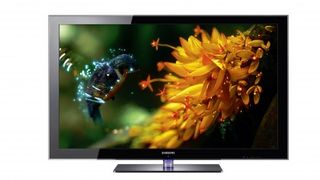
Good-bye, privacy?
It's this all-pervasive nature of IoT that's starting to worry privacy experts and US government decision-makers. While nightly TV current-affairs shows might play up concerns about backyard drones with on-board video cameras flying overhead, the low-cost of IoT tech could result in far more invasive internet-connected monitoring appearing in all manner of household items.
US Federal Trade Commission Chairwoman, Edith Ramirez, has already begun ringing the alarm bells. The Consumer Electronics Show in Las Vegas earlier this year began with a keynote address from Samsung head of consumer electronics, B. K. Yoon, painting a bright future under an IoT cloud, with all new Samsung TVs to be IoT-connected by 2017.
But while many were eyeing off the connected gadgets, Ramirez gave a keynote address of her own at CES, describing the benefits to global health and economic growth from IoT, before outlining her concerns, ranging from 'ubiquitous data collection' and 'potential for unexpected use of consumer data that could have adverse consequences' to 'heightened security risks'.
For starters, the increasingly personal nature of the data being collected by IoT devices could be pooled to build a revealing picture of ourselves. Ramirez says "connected devices are effectively allowing companies to digitally monitor our otherwise private activities".
But Ramirez is also concerned with the unexpected consequences of data collection, asking the question could your TV viewing habits affect future employment prospects. And then there's the threat of IoT devices being hijacked, simply because they're on the internet.
Essentially, Ramirez is challenging IoT companies not to ignore consumer privacy and security – but how strongly the FTC and other government agencies will back those sentiments remains to be seen.

Data analysis
It shouldn't come as a surprise then that IoT is having flow-on effects across the board. For example, the overwhelming flood of data that will inevitably flow as a result will see growing demand for data experts – and the education market is getting in early.
Demand for data analysis skills has universities worldwide increasing their data science courses. For example, in Australia, the University of Technology, Sydney (UTS) launches a new two-years/full-time Master of Data Science and Innovation degree this year, while Monash University will offer a Bachelor of Computer Science degree in Data Science beginning 2016. RMIT also offers a Master of Analytics degree.
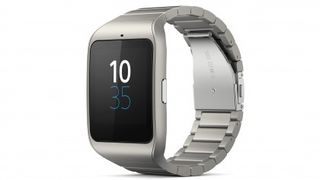
Be informed
Making your own IoT gear might not be everyone's cuppa, but there is no doubt IoT could clash with our privacy ideals as the internet permeates its way into areas of our lives we probably never imagined.
This is definite 'frontier technology' right now and the more we understand how it works, the data it generates and how that data is stored and used, the more we'll all be aware of the potential pitfalls and benefits the Internet of Things will bring.
Most Popular



